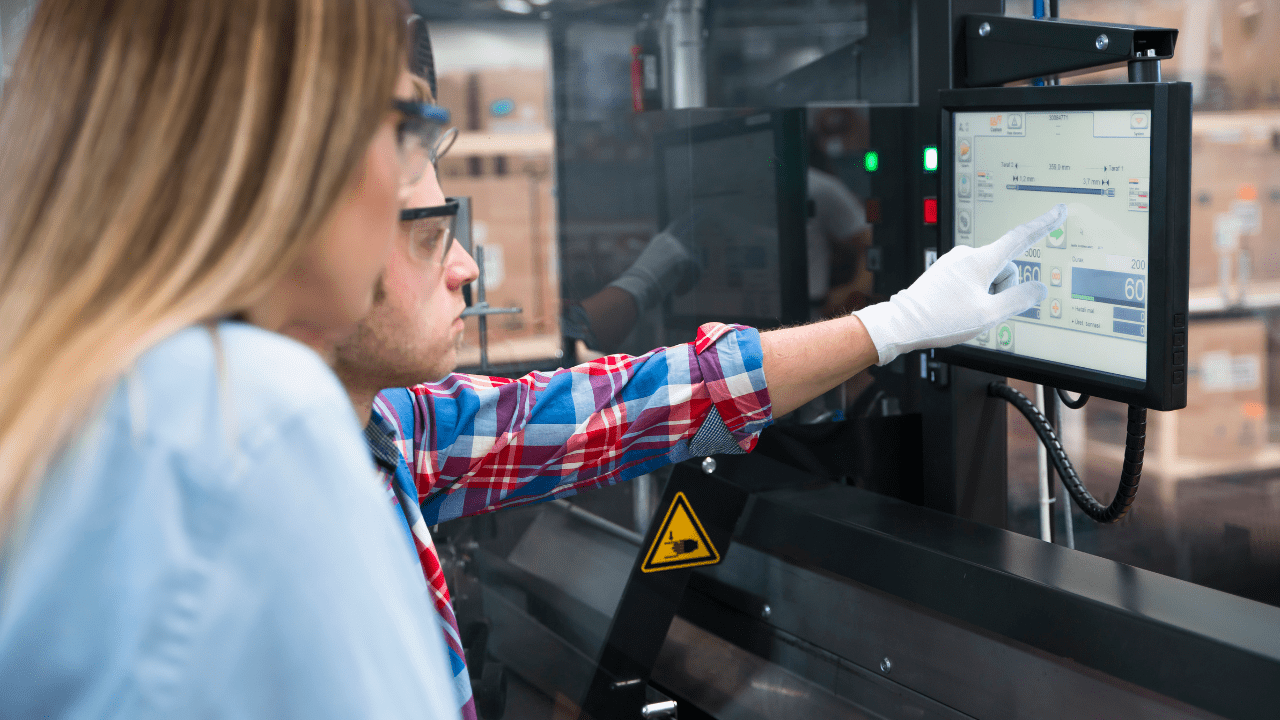The New Year is the best time for business owners to assess their current positioning and invest in improvements. After all, you always want to take your operations to the next level. The start of the year is an ideal time to get the momentum going.
Manufacturers are in a good place to improve because the domain has immense scope for improvement. Something better is always around the corner when it comes to production tech. Moreover, early adopters get a competitive edge with an increase in factory output, labor productivity, and capacity utilization.
But upgrading your manufacturing business requires a strategic approach as you must consider factors such as cost, downtime, and employee buy-in. You cannot adopt a technology randomly because it can topple your budget, affect the operational workflow, and fail to gain acceptance by your workforce. However, a viable upgrade plan helps you cover all these fronts. But you can rely on these surefire strategies to embrace innovation in 2023.
Table of Contents
1. Decide on your goals
Implementing any change in the manufacturing process can cost a fortune because the industry is inherently capital-intensive. Such critical steps require top leadership involvement from the outset. The best way to start with the initiative is to decide on the goals. For example, you may want to upgrade a specific part of the production operation or look for overall innovation with process automation. The top management should play its role by identifying long-term goals and expected ROI. The sooner they start, the better the outcomes are likely to be. So if you plan to pick innovation in the New Year, you must begin well before it dawns.
2. Identify your needs
Besides deciding on your goals, you must identify your needs to get the upgrade process on track. Employee involvement becomes crucial at this stage because they know the manufacturing system closely. So they are in a better place to understand the challenges, identify the need for changes, and recommend solutions for improvement. With the knowledge of these factors, you can pick the necessary upgrades instead of spending on unnecessary ones. Moreover, making them a part of the initiative makes buy-in easy down the road. Also, it creates a positive culture that focuses on efficiency, productivity, and safety in the long haul.
3. Choose the critical areas
Upgrading a conventional factory into a smart manufacturing unit is not a one-time change. It is a long process involving frugal resource allocation according to the goals and needs of your business. You can do it better by choosing critical areas to start the modernization process on the right foot. Avoid going too far too soon, and take an iterative approach to upgrades. For example, you can pinpoint specific areas with a high potential for improvement. It is critical to address an impending equipment breakdown that can affect the entire production chain. Likewise, you must rework a process that can enhance efficiency in the long run.
4. Automate where possible
Automation should be on top of your bucket list this New Year if you haven’t already adopted it. In fact, you can commit to automating new systems and processes if some existing ones are already in the automation mode. Think beyond having robots on your factory floor because automation is more about integrating software-driven solutions into your processes. For example, you can adopt machine learning tools to optimize production processes and predictive analytics to monitor inventory levels in real-time. Automate where possible because every step can reduce labor costs, errors, waste, and downtime. Additionally, it can increase productivity and enhance product quality and consistency.
5. Invest in design capabilities
Most manufacturers consider machinery upgrades for modernization. But things can get far better by investing in design capabilities with enhanced CAD solutions. For example, siemens solid edge is an ideal solution to speed up 3D CAD designing and editing. Its unique synchronous technology offers a unique combination of the simplicity of direct modeling and the flexibility of parametric design. You can rely on it to create new concept designs, respond to change requests, and simultaneously implement updates to multiple parts within a production assembly. The system lowers the risk of time-consuming rework, feature failures, and rebuild issues, so it is worth embracing in 2023.
6. Focus on talent management
Manufacturing is a resource-intensive domain, and you cannot go slack with building a high-quality workforce. Talent management is even more crucial in the new normal, so it should be a part of your priorities in 2023 and beyond. Consider adjusting your talent management strategies with steps such as better remote working policies, online training, and virtual onboarding. A flexible process is likely to keep the workforce happy and motivated, ensuring that they stick for the long haul. Look for ways to retain existing employees through attractive compensation packages and high-value perks. At the same time, strengthen your employer’s brand to attract the best talent in a competitive landscape.
7. Begin preventive maintenance
Another strategy to upgrade your manufacturing business this New Year is to adopt preventive maintenance schedules to keep your equipment and systems in good shape. The practice proactively monitors, manages, and maintains these parts of the business instead of waiting for them to fail. It implements a schedule to inspect and test machines and devices for signs of malfunction or wear before issues relating to productivity and safety arise. You can utilize predictive analytics technology for real-time monitoring and use data for scheduling regular maintenance tasks. An optimal schedule can drive significant cost savings and lower the risk of downtime due to unexpected malfunctions. It can also increase machinery’s life expectancy in the long run.
8. Improve lean techniques
Going lean should also be a part of your New Year’s resolutions in 2023. Lean manufacturing is about minimizing resource consumption without compromising output volume and quality. Manufacturers can rely on the right information and technology to manage their operations and limit waste. Besides resource optimization, lean operations also entail continuous improvement with small changes over an extended time instead of big leaps. But going lean requires a good understanding of all production activities and their mutual interaction. It enables you to pick the areas requiring improvements, such as using fewer resources and eliminating unnecessary steps in the production process.
9. Prioritize resilience
The manufacturing sector is more complex than ever, so business owners should be ready for unexpected disruptions. Think of the crisis the industry encountered when the pandemic first hit the world. Having a strategy to address such challenges is the key to survival and resilience. Consider building resilience in 2023 by investing in sophisticated technologies like artificial intelligence (AI), blockchain platforms, and remote capabilities. You can use AI to predict potential hazards before they occur. Blockchain can strengthen your business with an immutable record of events that are easy to track over time. Remote operations are the need of the hour, and more companies already have the capabilities to handle them. But you can go the extra mile to fine-tune them this year.
10. Collaborate with experts
Collaborating with the right technology partners is the key to getting the most out of innovation. Look for an expert with specialized knowledge and skills to get the right solutions on board. Outsourcing is far better than hiring an in-house team because it costs a fraction of the model and empowers your business with the best expertise. You can also rely on seasoned partners to recommend ideal upgrades within your budgets and process constraints. They can check the existing systems and suggest low-cost improvements that deliver maximum benefits. Moreover, you can rely on their knowledge to get the latest tech for your manufacturing company.
11. Go the extra mile with sustainability
Sustainability is no longer a passing trend for the manufacturing sector, so building a sustainable operation is another surefire success strategy that manufacturers must implement in 2023. Consumers are more eco-conscious than ever and prefer working with companies going the extra mile to lower their carbon footprints and stick with sustainable practices. Consider ways to reduce your energy consumption and waste production this year. You can invest in solar installations, implement efficient processes, and utilize recycled materials to avoid unnecessary emissions and consumption. Adopting these practices can empower your business in more than one way, from reducing your power bills to enhancing your reputation. You can even get tax credits and grants from government programs.
The manufacturing sector is one of the traditional industries as it relies mainly on machinery and labor. But technology has emerged as a game-changer in the sector in recent years. Not keeping pace with the latest trends can be detrimental to your business, no matter how strong your position in the market is. Consider implementing the necessary upgrades regularly to sustain and thrive in the competitive landscape. The New Year is the best time to assess the existing systems and implement improvements where needed. The good thing about the initiative is that it is simpler than it sounds. You can rely on these actionable upgrade strategies to get your business on the right track in 2023 and beyond.

I am a passionate, adventurous, and insatiate learner who loves to write about the latest technology trends. My experience working in an MNC has motivated me to understand that there are certain niche requirements for writing strategically about brands’ messages towards people’s interests which I’ve mastered over time through trial and error of many projects under various clients across diverse industries. It is my honest effort to put my experiences and knowledge of industry towards readers.






